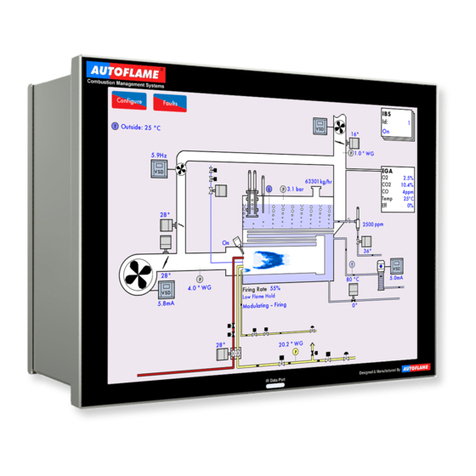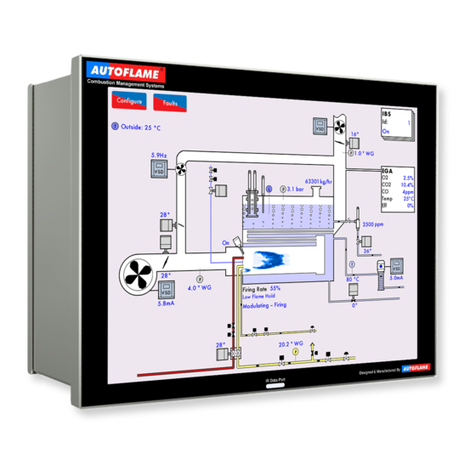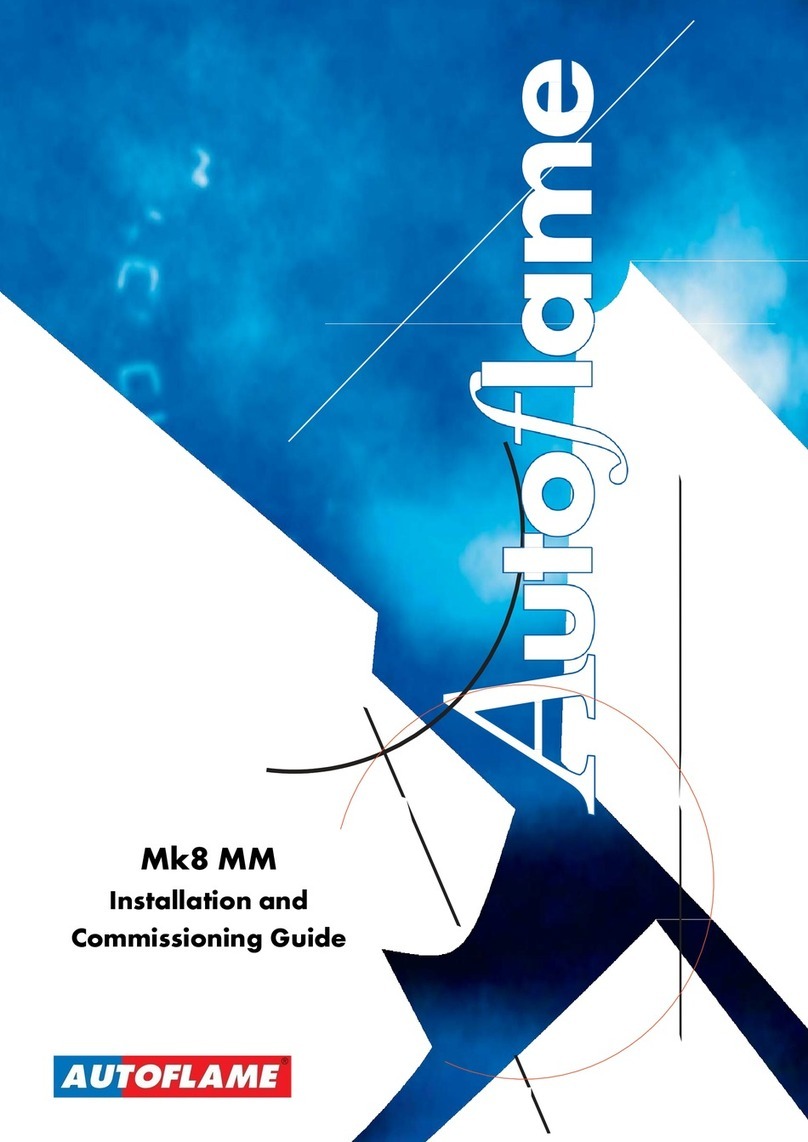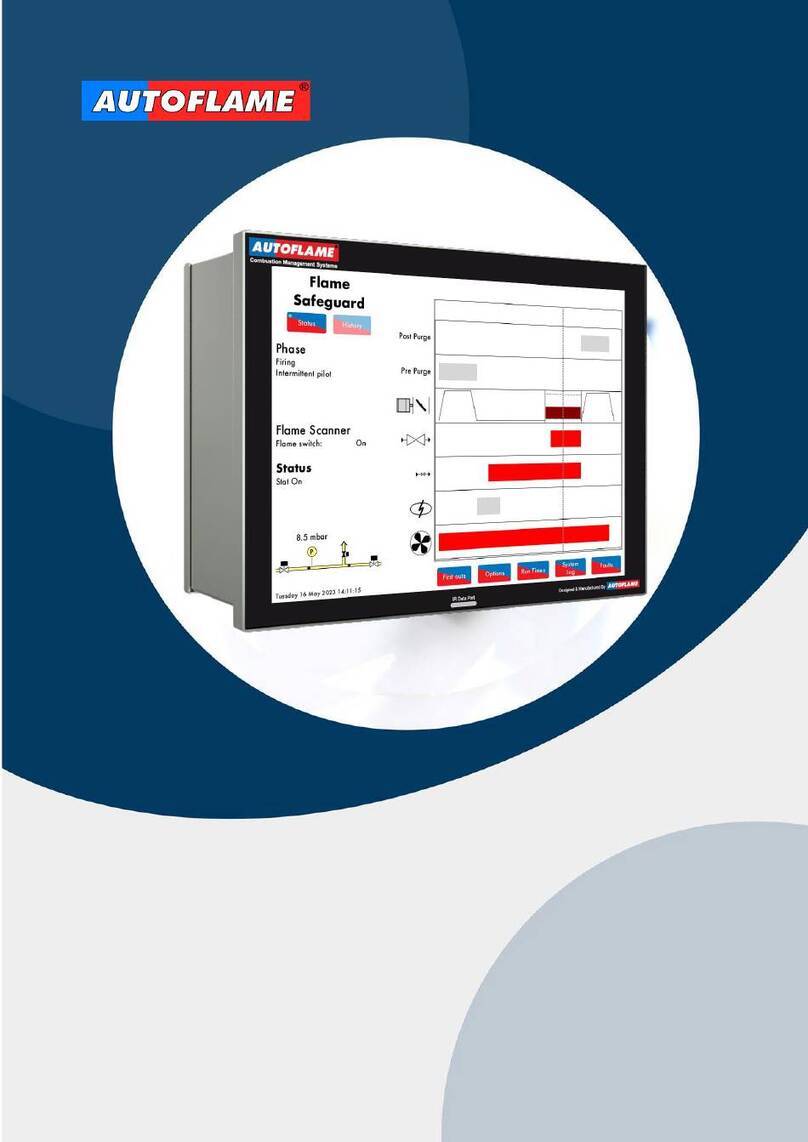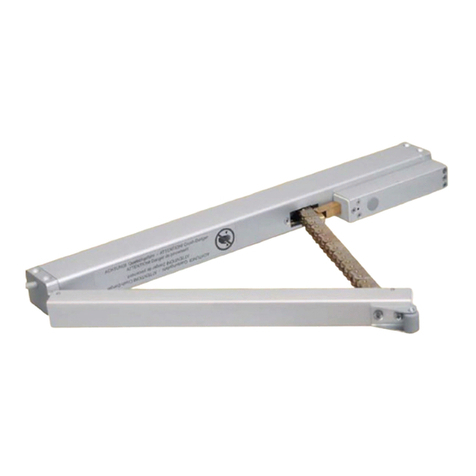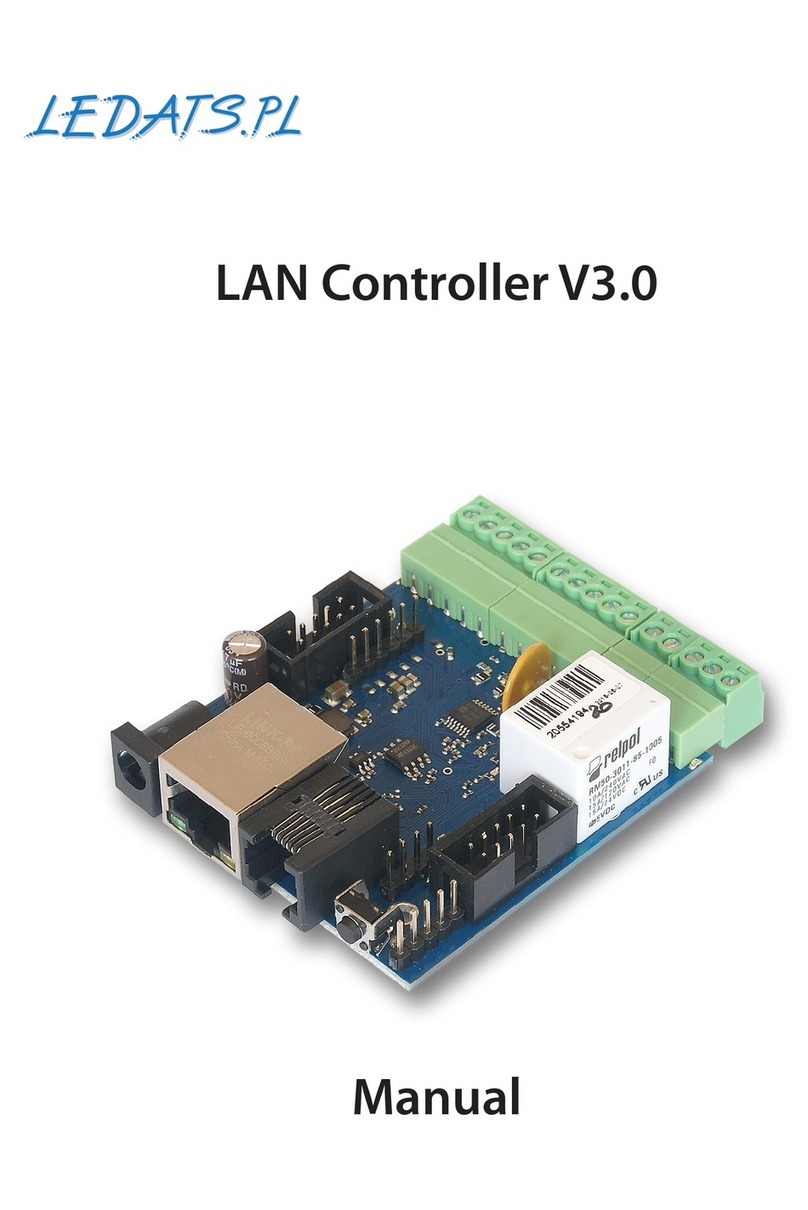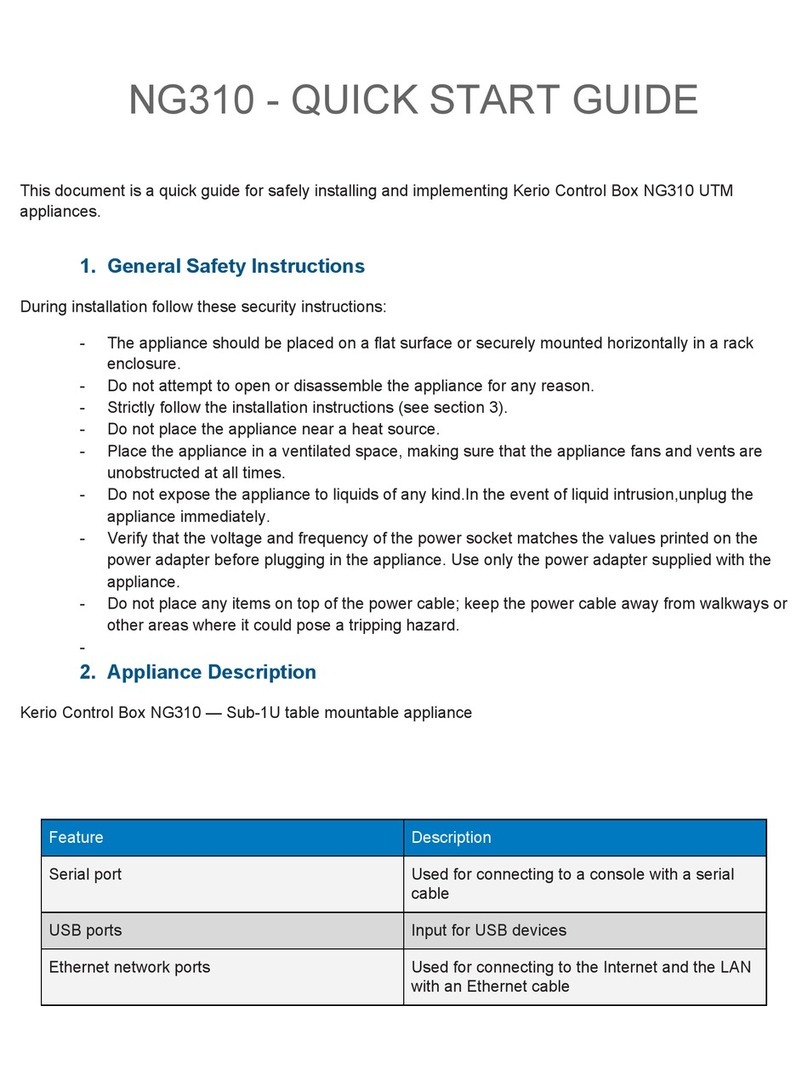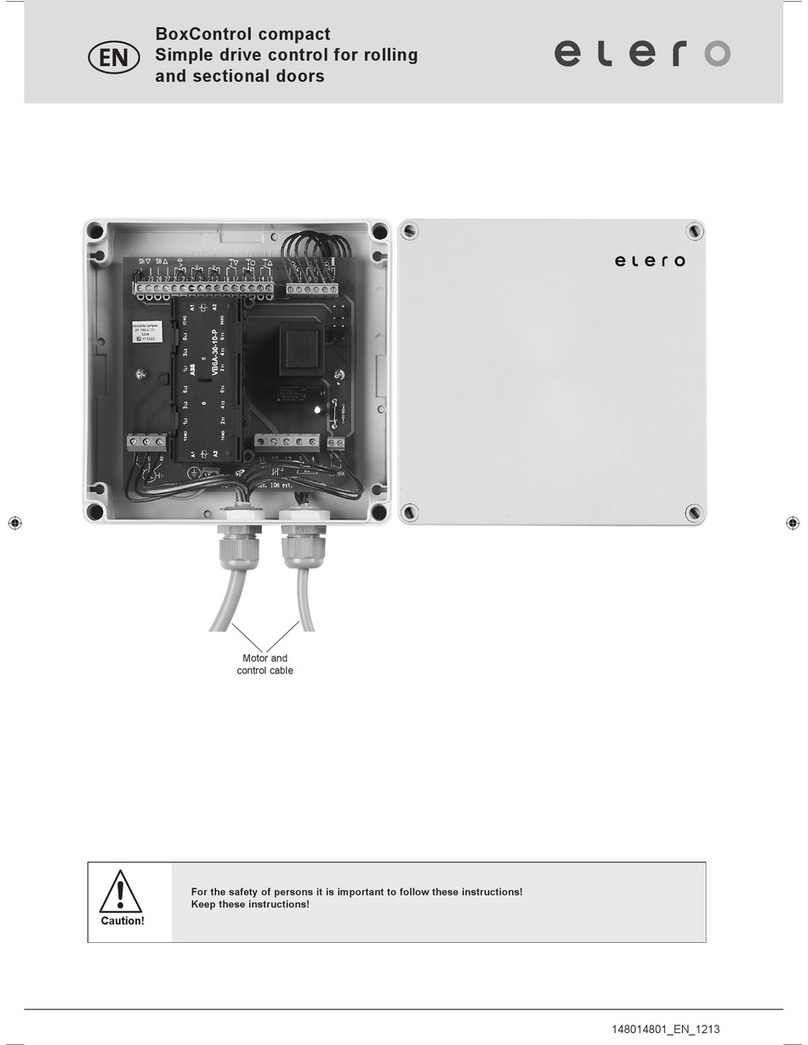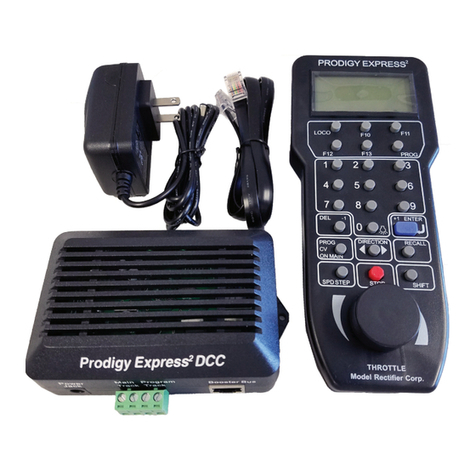AUTOFLAME MMM8002/FSG User manual

20 JAN 2023
Combustion Management Systems
AUTOFLAME
FLAME SAFEGUARD
CONTROLLER MANUAL
MMM8002/FSG

Autoflame Engineering Ltd.
Unit 1-2 Concorde Business Centre
Airport Industrial Estate
Wireless Road, Biggin Hill
Kent TN16 3YN
United Kingdom
Combustion Management Systems
+44 (0)1959 578 820
Tel:
technicalsupport@autoflame.com
Email:
www.autoflame.com
Web:
AUTOFLAME
FLAME SAFEGUARD
MANUAL
MMM8002/FSG
20 JAN 2023
This manual and all the information contained herein is copyright of Autoflame Engineering Ltd. It may not be
copied in the whole or part without the consent of the Managing Director.
Autoflame Engineering Ltd.’s policy is one of continuous improvement in both design and manufacture. We
therefore reserve the right to amend specifications and/or data without prior notice. All details contained in this
manual are correct at the time of going to print.

Important Notes
A knowledge of combustion related procedures and commissioning is essential before embarking in work on
any of the MM / EGA systems. This is for safety reasons and effective use of the MM / EGA system. Hands
on training is required. For details on schedules and fees relating to group training courses and individual
instruction, please contact the Autoflame Engineering Ltd. offices at the address listed on the front.
Short Form - General Terms and Conditions
A full statement of our business terms and conditions are printed on the reverse of all invoices. A copy of these
can be issued upon application, if requested in writing.
The system equipment and control concepts referred to in this manual MUST be installed, commissioned and
applied by personnel skilled in the various technical disciplines that are inherent to the Autoflame product
range, i.e. combustion, electrical and control.
The sale of Autoflame’s systems and equipment referred to in this manual assume that the dealer, purchaser
and installer has the necessary skills at his disposal. i.e. A high degree of combustion engineering experience,
and a thorough understanding of the local electrical codes of practice concerning boilers, burners and their
ancillary systems and equipment.
Autoflame’s warranty from point of sale
•Two years on all electronic and electro-mechanical equipment, assemblies and components.
•One year on all EGA systems and UV & IR scanners, including parts, components, cells and sensors.
The warranty assumes that all equipment supplied will be used for the purpose that it was intended and in
strict compliance with our technical recommendations.
Autoflame’s warranty and guarantee is limited strictly to product build quality, and design. Excluded absolutely
are any claims arising from misapplication, incorrect installation and/or incorrect commissioning.

CONTENTS
1. AUTOFLAME FLAME SAFEGUARD OVERVIEW, SPECIFICATIONS AND WIRING................ 7
1.1. Autoflame Flame Safeguard Overview.............................................................................................. 7
1.1.1. Autoflame Flame Safeguard Main Features................................................................... 8
1.1.2. Fixing Holes and Dimensions ......................................................................................... 9
1.2. Installation........................................................................................................................................ 10
1.2.1. Humidity ........................................................................................................................ 10
1.2.2. Vibration........................................................................................................................ 10
1.2.3. Weather ........................................................................................................................ 10
1.2.4. Environmental Classification......................................................................................... 11
1.3. Wiring............................................................................................................................................... 12
1.3.1. Servo Motor Control Schematic.................................................................................... 13
1.3.2. On/Off Burner Control Schematic ................................................................................. 14
1.4. Electrical Specifications ................................................................................................................... 15
1.4.1. Classifications ............................................................................................................... 15
1.4.2. Inputs and Outputs ....................................................................................................... 15
1.4.3. Internal Hardware Status Monitoring ............................................................................ 15
1.4.4. Inputs Checks ............................................................................................................... 15
1.4.5. Cable Specifications ..................................................................................................... 16
1.4.6. Terminals Description ................................................................................................... 17
1.5. Relay Box......................................................................................................................................... 18
1.6. Standards......................................................................................................................................... 19
2. OPTIONS AND PARAMETERS................................................................................................... 20
2.1. Options............................................................................................................................................. 20
2.2. Parameters ...................................................................................................................................... 40
2.3. Language ...................................................................................................................... 48
2.4. Set Clock....................................................................................................................... 49
3. CONFIGURING THE AUTOFLAME FLAME SAFEGUARD UNIT ............................................. 50
3.1. Overview .......................................................................................................................................... 50
3.1.1. Single Servo Burner Set Up.......................................................................................... 51
3.1.2. On/Off Burner Set Up ................................................................................................... 51
3.1.3. Wiring Checks............................................................................................................... 51
3.2. Installation Checks........................................................................................................................... 52
3.2.1. Configuration Checks ................................................................................................... 52
3.2.2. Operational Checks ...................................................................................................... 52
3.2.3.Installation Precautions................................................................................................. 52
3.2.4. Maintenance and Servicing .......................................................................................... 52
4. GENERAL FEATURES................................................................................................................ 53
4.1. No Pre-Purge ................................................................................................................................... 53
4.2. Autoflame Flame Safeguard Flame Detection Using Ionisation...................................................... 53
4.3. Terminals 80, 81 and 82 Functions ................................................................................................. 54

4.3.1. T80 Functions ............................................................................................................... 54
4.3.2. T81 Functions ............................................................................................................... 54
4.3.3. T82 Functions ............................................................................................................... 54
5. REMOTE CONTROL.................................................................................................................... 55
5.1. Modbus Settings .............................................................................................................................. 55
5.2. Configuration ................................................................................................................................... 55
5.3. Modbus Addresses .......................................................................................................................... 56
5.3.1. Modbus address for MM status (30102)....................................................................... 59
6. OPERATION................................................................................................................................. 60
6.1. Home Screen................................................................................................................................... 60
6.1.1. Flame Safeguard – History ........................................................................................... 61
6.1.2. Options.......................................................................................................................... 62
6.1.3. Parameters ................................................................................................................... 63
6.1.4. Run Times..................................................................................................................... 64
6.1.5. System Log ................................................................................................................... 67
6.1.6. Faults ............................................................................................................................ 68
7. BURNER START-UP SEQUENCE .............................................................................................. 69
7.1. Recycle ............................................................................................................................................ 70
7.2. Standby............................................................................................................................................ 71
7.3. Internal Relay Tests......................................................................................................................... 72
7.4. CPI Input .......................................................................................................................................... 73
7.5. Valve Proving................................................................................................................................... 74
7.6. Wait for Air Switch ........................................................................................................................... 78
7.7. Purge ............................................................................................................................................... 79
7.8. Ignition ............................................................................................................................................. 82
7.9. Pilot .................................................................................................................................................. 84
7.10. Proving......................................................................................................................................... 87
7.11. Firing ............................................................................................................................................ 89
7.12. Post Purge ................................................................................................................................... 90
8. UNLOCKING THE AUTOFLAME FLAME SAFEGUARD UNIT TO A MINI MK8 ...................... 91
8.1. Fully unlocking the Autoflame Flame Safeguard Controller ............................................................ 91
9. ERRORS AND LOCKOUTS ........................................................................................................ 93
9.1. Errors ............................................................................................................................................... 93
9.2. Lockouts........................................................................................................................................... 96
9.3. Alarms and Warnings .................................................................................................................... 100
9.4. Setting Conflicts............................................................................................................................. 102
9.5. Forced Commission....................................................................................................................... 104

Important Safety Notes
WARNING
Fire, Explosion or Electrical Shock Hazard. Can cause severe injury,
death or property damage.
Please fully read and understand the following notes before commencing with any work
related to the Mini Mk8 MM Flame Safeguard Controller. Failure to do so can result in
serious or even fatal injury, and can cause permanent equipment failure and substantial
property damage.
Installation, commissioning, burner start-up and changing Options/Parameters must only
be carried out by an Autoflame-trained and certified technician with thorough
understanding of the Autoflame combustion control systems and boiler/combustion
control in general. Any person carrying out this work without undergoing the necessary
training and gaining understanding of the boiler plant may place themselves and others
in a potentially dangerous situation or cause permanent equipment failure.
Any person working on a boiler plant must be adequately trained and have a thorough
understanding and appreciation of the boiler plant.
It is the responsibility of the commissioning technician to ensure that the system
operation meets all local codes and regulations.
Electrical connections are live; make sure to isolate the mains power, fully and safely,
before carrying out any work related to the wiring connections; failure to do so can result
in serious or even fatal injury.
Use extreme care while testing the system. Live voltages are present on most terminal
connections when the power is on and are a serious electrical shock hazard.
Replace all limits and interlocks not operating properly. Do not bypass limits and
interlocks.
Modification to the Autoflame system settings should only ever be carried out by a
qualified combustion engineer. Changes to the Autoflame control system setup has the
potential to make the controller operate in an unstable and potentially unsafe manner.
If you are unclear about anything related to the Autoflame system, please contact
Autoflame for advice.
!

1 Autoflame Flame Safeguard Overview, Specifications and Wiring
Flame Safeguard Manual Page | 7
1. AUTOFLAME FLAME SAFEGUARD OVERVIEW,
SPECIFICATIONS AND WIRING
1.1. Autoflame Flame Safeguard Overview
The Autoflame Flame Safeguard unit or MMM8002/FSG is a version of the Micro-Modulating system that
provides an easily programmable and flexible means of providing the flame safeguard aspects of controlling a
boiler/burner.
This control module encompasses all the functions required for reliable flame safeguard management. Built
into this system is a fully automated flame safeguard and valve proving system, MODBUS connectivity, and a
touchscreen interface.
This system monitors the flame safeguard, as it checks on the flame of the burner from the use of a UV,
Ionisation, or IR Scanner.

1 Autoflame Flame Safeguard Overview, Specifications and Wiring
Flame Safeguard Manual Page | 8
1.1.1. Autoflame Flame Safeguard Main Features
The Autoflame Flame Safeguard features include the following:
•Full colour touch screen.
•120V or 230V Standard operation 50/60Hz.
•2 independent fuel programmes.
•Internal flame safeguard – full flame supervision with self-check UV, IR and ionisation.
•Gas valve train leak supervision via digital input (T82).
•Air pressure proving and monitoring via Air switch.
•64 Lockouts/errors stored with date, time, phase and reset.
•System log stored with date, time and status.
•Adjustable burner control safety times.
•Password protection of all safety related functions.
•Infra-red port for upload/download of configuration data.
•Fully adjustable user options within the system to tailor operation to the application.
•Download all commissioning data from an Autoflame Flame Safeguard unit to a PC via Download
Manager.
•Upload commissioning data from a PC to an Autoflame Flame Safeguard unit via Download Manager.
•Direct Modbus for communication to BMS or remote monitoring and control
•On-board diagnostics
•System fault alarm output

1 Autoflame Flame Safeguard Overview, Specifications and Wiring
Flame Safeguard Manual Page | 9
1.1.2. Fixing Holes and Dimensions

1 Autoflame Flame Safeguard Overview, Specifications and Wiring
Flame Safeguard Manual Page | 10
1.2. Installation
When Installing this Flame Safeguard Controller
Read these instructions carefully. Failure to follow them could damage the product or cause a
hazardous condition.
Check the ratings given in the instructions and marked on the product to ensure the product is suitable
for your application.
The installer must be an Autoflame trained, experienced, flame safeguard service technician.
After installation is complete, check out the product operation as detailed in these instructions.
Never update the software on the Flame Safeguard Controller without consulting Autoflame first. Using
wrong software can damage equipment.
Warning
Fire or Explosion Hazard. Can cause severe injury, death or property damage.
To prevent possible hazardous burner operation, perform verification of safety
requirements each time a Flame Safeguard controller is installed on a burner.
IMPORTANT
For on-off gas-fired systems, some authorities, who have jurisdiction, prohibit the wiring of any limit
or operating contacts in series between the flame safeguard control and the main fuel valve(s).
Two flame detectors can be connected if necessary (see the latest Autoflame Flame Scanners Guide)
This equipment generates, uses and can radiate radio frequency energy, and if not installed and used
in accordance with the instructions, may cause interference to radio communications. It has been
tested and found to comply with the limits for a Class B computing device of part 15 of FCC rules,
which are designed to provide reasonable protection against such interference when operated in a
commercial environment. Operation of this equipment in a residential area may cause interference, in
which case the users, at their own expense, may be required to take whatever measures are required
to correct this interference.
This digital apparatus does not exceed the Class B limits for radio noise of digital apparatus set out in
the Radio Interference Regulations of the Canadian Department of Communications.
1.2.1. Humidity
The Autoflame Flame Safeguard controller is designed to operate in a maximum 90 percent relative humidity,
continuous, noncondensing moisture environment.
Condensing moisture can cause a shutdown.
1.2.2. Vibration
Do not install the Flame Safeguard controller where it could be subjected to vibration in excess of 0.5G
continuous maximum vibration.
1.2.3. Weather
The Flame Safeguard controller is not designed to be watertight. If installed outdoors it must be protected by
an approved watertight enclosure. See protection rating in section 1.2.4.

1 Autoflame Flame Safeguard Overview, Specifications and Wiring
Flame Safeguard Manual Page | 11
1.2.4. Environmental Classification
The Flame Safeguard Controller meets the following climate specification:
Climate:
Min. Temperature
0°C (32°F)
Recommended Temperature
Less than 40°C (104°F)
Max. Temperature
60°C (140°F)
Humidity
0 to 90% non-condensing
Storage:
Temperature
-20 to 85°C (-4 to 185°F)
Protection Rating:
The unit is designed to be panel mounted in any orientation and the front
facia is IP65, NEMA4. The back of the unit is IP20, NEMA1.

1 Autoflame Flame Safeguard Overview, Specifications and Wiring
Flame Safeguard Manual Page | 12
1.3. Wiring
1. For the internal block diagram of the Autoflame Flame Safeguard controller, see section 1.3.1
& 1.3.2.
2. Disconnect the power supply before beginning installation to prevent electrical shock and
equipment damage. More than one power disconnect may be involved.
3. All wiring must comply with all applicable electrical codes, ordinances and regulations. Wiring,
where required, must comply with NEC Class 1 wiring.
4. Recommended wire size and type is defined in section 1.4.5 Cable Specifications. For high
temperature installations, use wire selected for a temperature rating above the maximum
operating temperature. All wiring must be moisture resistant.
5. Do not connect more than two wires per terminal. If more than two wires need to be connected
to a terminal, wire into a suitable terminal block in the panel first and from there to the unit
terminal with a single wire.
6. Recommended wire routing for Autoflame Flame Scanners:
a. Do not run high voltage ignition transformer wires in the same conduit with the flame
scanner wiring.
b. Do not route flame scanner wires in a conduit with line voltage circuits.
c. Enclose flame scanner wires in metal conduit.
d. Follow directions given in the Autoflame Flame Scanners Guide.
7. Do not exceed the terminal ratings. Refer to the wiring diagram in section 1.3.1 & 1.3.2 or to the
ratings in the section 1.4 Electrical Specifications.
8. The voltage tolerance of the power supply must match those of the Flame Safeguard controller.
A separate power supply circuit may be required for the Flame Safeguard controller with the
required disconnect and overload protection added.
9. Check all wiring circuits and complete all the checks before installing the plug-in connectors
to the flame safeguard controller; see section 1.3.1 & 1.3.2.
10. Install all electrical connectors.
11. Restore power to the panel.
Electrical Shock Hazard
Can cause severe injury, death or property damage.
1. To prevent electrical shock and equipment damage, disconnect the power supply before
beginning installation. More than one power supply disconnect may be involved.
2. Wiring connections for the Autoflame Flame Safeguard controller are unique; therefore, refer
to sections 1.3 and 1.4 for the correct specifications and connections.
3. Wiring must comply with all applicable codes, ordinances and regulations.
4. Wiring, where required, must comply with NEC Class 1 wiring.
5. Loads connected to the Flame Safeguard controller must not exceed those listed on the wiring
label or the specifications (see section 1.4.2 of this manual).
6. Limits and interlocks must be rated to carry and break current simultaneously to the ignition
transformer, pilot valve, and main fuel valve(s).
7. All external timers must be listed or component recognized by authorities who have
jurisdiction for the specific purpose for which they are used.

1 Autoflame Flame Safeguard Overview, Specifications and Wiring
Flame Safeguard Manual Page | 13
1.3.1. Servo Motor Control Schematic
J.S.K. / 10.11.22 / FLAME SAFEGUARGE ISS.5
MK8 FLAME SAFEGUARD
SCHEMATIC CONNECTION DIAGRAM
FOR SUPPLY CONNECTIONS USE WIRES
SUITABLE FOR AT LEAST 75°C /167°F
USE COPPER CONDUCTORS ONLY
58
54
57
50
51
64
S
53
54
55
57
58
59
60
63
68
69
70
71
72
73
74
75
78
79
89
90
66
67
47
55
59
60
63
53
CALL FOR HEAT
BURNER ON/OFF
AIR PROVING SWITCH
GAS VALVES C.P.I./POC
GREEN
YELLOW
22
21
51
50
51
50
* LIMIT STAT
*NOTE:
HIGH LIMIT STAT MUST
BE MANUAL RESET TYPE
51
64
50
68
67
66
EARTH
NEUTRAL
LIVE
37
38
S
40
41
S
42
43
44
46
39
S
FUSE
FUSE
2 A T
5 A T
RED
BLUE
IF IN DOUBT ASK AUTOFLAME
U.V. DETECTOR
SELF CHECK
U.V. DETECTOR
FLAME ROD
OR
PILOT VALVE
(SSOV) VALVE 1
IGNITION TRANS.
BURNER MOTOR
61
62
S
80
81
82
3
S
11
12
S
10
1
2
80
81
HIGH FIRE / PURGE SWITCH
S
25
26
21
22
S
29
48
49
30
27
28
RED
BLACK
MODBUS
MM-
MM+
5A FUSED
SUPPLY
62
61
(SSOV) VALVE 2
VENT VALVE
GREEN
YELLOW
RED
BLUE
29
30
37
39
ALL LOW VOLTAGE WIRING TO THE CONTROL IS TO BE
WIRED AS PART OF A CLASS 1 CIRCUIT
WWW.AUTOFLAME.COM
MINIMUM AND MAXIMUM 1ST AND 2ND SAFETY TIMES*
FUEL 1ST SAFETY TIME 2ND SAFETY TIME
GAS
3 - 10 secs
3 - 10 secs
OIL 3 - 15 secs
*NOTE:
SAFETY TIMES ARE ADJUSTABLE TO MEET LOCAL CODE
REQUIREMENTS, PLEASE SET AS REQUIRED
AUTOFLAME
I.R. SENSOR
*NOTE:
ONLY THE I.R. SENSOR SCREEN IS TO BE
CONNECTED AT THE MM END.
RELAY BOX
HIGH/LOW INITIATE
RELEASE TO MODULATE
B
R
W
69
R1
W1
B1
B
R
W
R
W
B
PRESSURE
CONTROLLER
MOTOR
HF
LF
LOW FIRE / START SWITCH
R1
R2
POWER
VALVE PROVING SWITCH 82
COMMON ALARM RELAY 79
Fuse
Terminals Protected
5A
Mains voltage output terminals 57 – 63
2A
Low voltage terminals and switched neutral outputs

1 Autoflame Flame Safeguard Overview, Specifications and Wiring
Flame Safeguard Manual Page | 14
1.3.2. On/Off Burner Control Schematic
J.S.K. / 31.01.23 / FLAME SAFEGUA RD (ON-OFF BURNER) ISS.1
58
54
57
55
59
60
63
53
CALL FOR HEAT
BURNER ON/OFF
AIR PROVING SWITCH
GAS VALVES C.P.I./POC
GREEN
YELLOW
22
21
51
50
51
50
* LIMIT STAT
*NOTE:
HIGH LIMIT STAT MUST
BE MANUAL RESET TYPE
51
64
50
68
67
66
EARTH
NEUTRAL
LIVE
RED
BLUE
OR
PILOT VALVE
(SSOV) VALVE 1
IGNITION TRANS.
BURNER MOTOR
80
81
HIGH FIRE / PURGE SWITCH
RED
BLACK MM-
MM+
5A FUSED
SUPPLY
62
61
(SSOV) VALVE 2
VENT VALVE
GREEN
YELLOW
RED
BLUE
29
30
37
39
MINIMUM AND MAXIMUM 1ST AND 2ND SAFETY TIMES*
FUEL 1ST SAFETY TIME 2ND SAFETY TIME
GAS
3 - 10 secs
3 - 10 secs
OIL 3 - 15 secs
*NOTE:
SAFETY TIMES ARE ADJUSTABLE TO MEET LOCAL CODE
REQUIREMENTS, PLEASE SET AS REQUIRED
*NOTE:
ONLY THE I.R. SENSOR SCREEN IS TO BE
CONNECTED AT THE MM END.
LOW FIRE / START SWITCH
VALVE PROVING SWITCH 82
COMMON ALARM RELAY 79
69
70
Fuse
Terminals Protected
5A
Mains voltage output terminals 57 – 63
2A
Low voltage terminals and switched neutral outputs
ON DELAY TIMER RELAY
SET DELAY TO 5 SEC.

1 Autoflame Flame Safeguard Overview, Specifications and Wiring
Flame Safeguard Manual Page | 15
1.4. Electrical Specifications
1.4.1. Classifications
Classification according to EN298
Mains Supply:
230V, +10%/-15%}
47-63 Hz, unit max. consumption 140W
120V, +10%/-15%}
1.4.2. Inputs and Outputs
Outputs Terminal
Rating (230V)
Rating (120V)
Notes
57
250mA
250mA
Must be connected through contactor
58
250mA
250mA
Must be connected through contactor
59
1A
2A
0.6 power factor
60
1A
2A
0.6 power factor
61
1A
2A
0.6 power factor
62
1A
2A
0.6 power factor
63
1A
2A
0.6 power factor
79
100mA
100mA
To drive relay/lamp only – switched neutral
Max. Load
5A
5A
Electrical Shock Hazard
Can cause severe injury, death or property damage.
•The high and low voltage connections are not safe to touch. Protection against electric shock is
provided by correct installation.
•Control voltage cabling should be maximum 10m, screened (if not screened then less than 1m,
however servomotors can be unscreened up to 10m).
•Any cabling over 10m must have additional surge protection.
•Low voltage cables should be screened (shielded) cable as specified in section 1.4.5.
•The burner ‘High Limit Stat’ must be a manual reset type.
The cover (back plate) of the Flame Safeguard controller must always be re-fitted after the wiring is completed
to prevent access to the electric shock hazard areas, unauthorised wiring modifications or fuse replacement.
1.4.3. Internal Hardware Status Monitoring
The Flame Safeguard controller analyses the integrity of the internal hardware and diagnostics values for
key parameters are available.
The relay safety checks are carried out during every startup sequence and their progress will be displayed
on the screen.
1.4.4. Inputs Checks
All system input circuits are examined to assure that the Flame Safeguard controller is capable of recognising
the true status of external controls, limits and interlocks. If any input fails this test, a safety shutdown occurs
and the fault will be logged.

1 Autoflame Flame Safeguard Overview, Specifications and Wiring
Flame Safeguard Manual Page | 16
1.4.5. Cable Specifications
Low Voltage
The screened cable used for low voltage wiring from the Flame Safeguard unit to the detectors must conform
to the following specification:
U.V. cable length should not exceed 25m; all other screened cable should not exceed 50m.
•16/0.2mm PVC insulated overall braid, screened, PVC sheathed.
•Sixteen wires per core.
•Diameter of wires in each core 0.2mm.
•Rated at 440V AC rms at 1600Hz.
•DEF 61-12 current rating per core 2.5A.
•Maximum operating temperature 70oC (158oF).
•Nominal conductor area 0.5sq mm per core.
•Nominal insulation radial thickness on core 0.45mm.
•Nominal conductor diameter per core 0.93mm.
•Nominal core resistance at 20oC. 40.1Ω/1000m.
•Nominal overall diameter per core 1.83mm.
•Fill factor of braid screen 0.7.
•Equivalent imperial conductor sizes 14/0.0076.
Use the number of cores suitable for the application. A universal part numbering system appears to have been
adopted for this type of cable as follows:
•16-2-2C 2 Core.
•16-2-3C 3 Core.
•16-2-4C 4 Core.
•16-2-6C 6 Core.
•16-2-8C 8 Core.
(5 Core not readily available)
Note: If using 4 Core cable and interference is detected, use 2 sets of 2 Core.
Data Cable
Data cable must be used for communication connections between MM to BMS systems for Modbus RS485.
Communication cable should not exceed 1km.
Types of data cable that can be used:
•Belden 9501 for 2-core shielded cable (1 twisted pair).
•Belden 9502 for 4-core shielded cable (2 twisted pairs).
•STC OS1P24.
Samples are available upon request. Low voltage and data cable can be ordered directly from Autoflame
Engineering, please contact Autoflame.

1 Autoflame Flame Safeguard Overview, Specifications and Wiring
Flame Safeguard Manual Page | 17
1.4.6. Terminals Description
S
All terminals marked S are internally connected and provide for connections to the various
screened cables.
21, 22
Connections to an Autoflame self-check UV sensor.
27, 28
Communications port connections for Modbus.
29, 30
Digital communications connections to an Autoflame IR scanner (MM80017).
48, 49
+15V connections to an Autoflame IR scanner (MM80017).
50, 51
Connections to an Autoflame UV sensor.
64
Connections to a flame rod.
53
Mains voltage input – burner on/off signal, running interlock circuit.
Note: All external safety devices that require manual reset must be reset external to the
Autoflame system and prior to completing the recycling interlock.
54
Mains voltage input – air proving switch.
55
Mains voltage input - proving circuits, e.g. gas valve proof of closure.
57
Mains voltage output – call for heat.
58
Mains voltage output – burner motor.
59
Mains voltage output – start/pilot valve.
60
Mains voltage output – main fuel valve 1.
61
Mains voltage output – main fuel valve 2.
62
Mains voltage output – vent valve.
63
Mains voltage output – ignition transformer.
66
Mains supply – earth.
67
Main supply – neutral.
68
Mains supply – live/hot.
69
Mains voltage output, power to Relay Box (SP80065).
70
Switched neutral – High/Low Initiate output.
71
Switched neutral – Release to Modulate output.
79
Switched neutral – alarm output for MM lockout/MM error.
80
Low Fire / Start position interlock.
81
High Fire / Purge interlock.
82
Valve proving mains input.
Note that outputs T70 and T71 are switched neutrals and must be connected to the motor through
relays. Autoflame provide the relay box (SP80065) to facilitate this. Alternatively, relays may be wired
in as per the wiring schematic in section 1.3.1.

1 Autoflame Flame Safeguard Overview, Specifications and Wiring
Flame Safeguard Manual Page | 18
1.5. Relay Box
The relay box (SP80065) provides all the connections shown in section 1.3.1 for wiring between a servo motor
with high and low limit switches and the Flame Safeguard controller. It also provides for the switchover of
control to a load sensor allowing the burner to modulate once the flame has been established. The Flame
Safeguard unit will continue to monitor the status of the flame and initiate a safety shutdown in the event of
any issues.
For an On/Off burner, connections are defined in section 1.3.2 for an On-delay timer relay to allow the start-
up sequence to be carried out.
CAUTION - Equipment Damage Hazard.
Improper connection or replacement of relays or the relay box will cause equipment
failure.

1 Autoflame Flame Safeguard Overview, Specifications and Wiring
Flame Safeguard Manual Page | 19
1.6. Standards
The Autoflame Flame Safeguard unit has been tested and approved to the following standards:
•UL 372, 5th Edition
•C22.2 No. 199-M89
•BS EN 298:2012
•BS EN 12067-2:2004
•BS EN 1643:2014
•BS EN 1854:2010
•ISO 23552-1:2007
•AGA AS 4625-2008
•AGA AS 4630-2005

2 Options and Parameters
Flame Safeguard Manual Page | 20
2. OPTIONS AND PARAMETERS
2.1. Options
The options and parameters are all viewable while the Flame Safeguard controller is in run mode and the
burner is firing. All Burner Control (BC) options/parameters can only be changed in Commissioning mode.
Through Commissioning Mode, all the options and parameters can be adjusted according to the application.
Power up the unit. Press during the system start up.
Figure 2.1.i Enter Password
“Enter Commissioning Password” is displayed. Use the keypad to enter the password, then press
. Press on or to change the value of an incorrect entry.
Note: The commissioning password should not be distributed to anyone who is not a factory trained and a
certified engineer.
Table of contents
Other AUTOFLAME Controllers manuals
Popular Controllers manuals by other brands
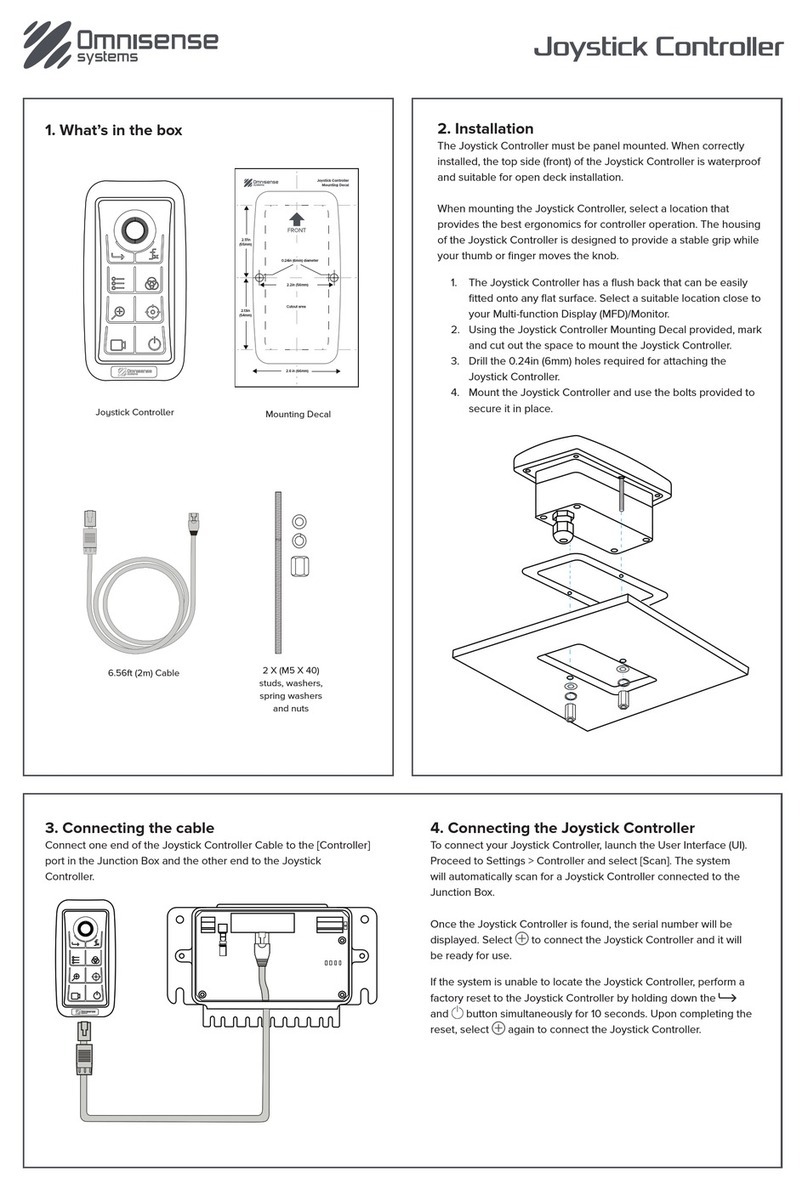
Omnisense Systems
Omnisense Systems Joystick Controller quick start guide
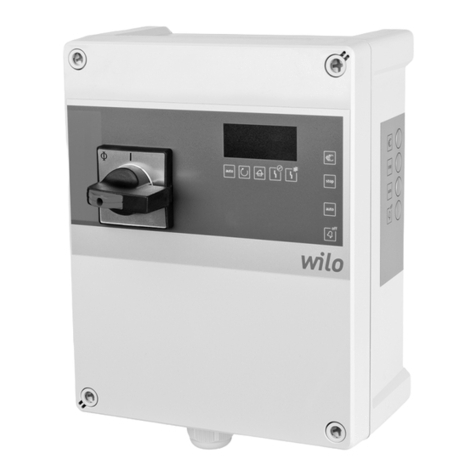
Wilo
Wilo Wilo-Control MS-L Installation and operating instructions
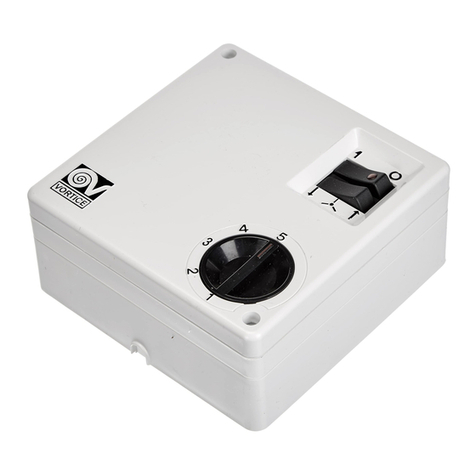
Vortice
Vortice SCRR5 Instruction booklet

Carrier
Carrier 33CS Installation, service and instructions
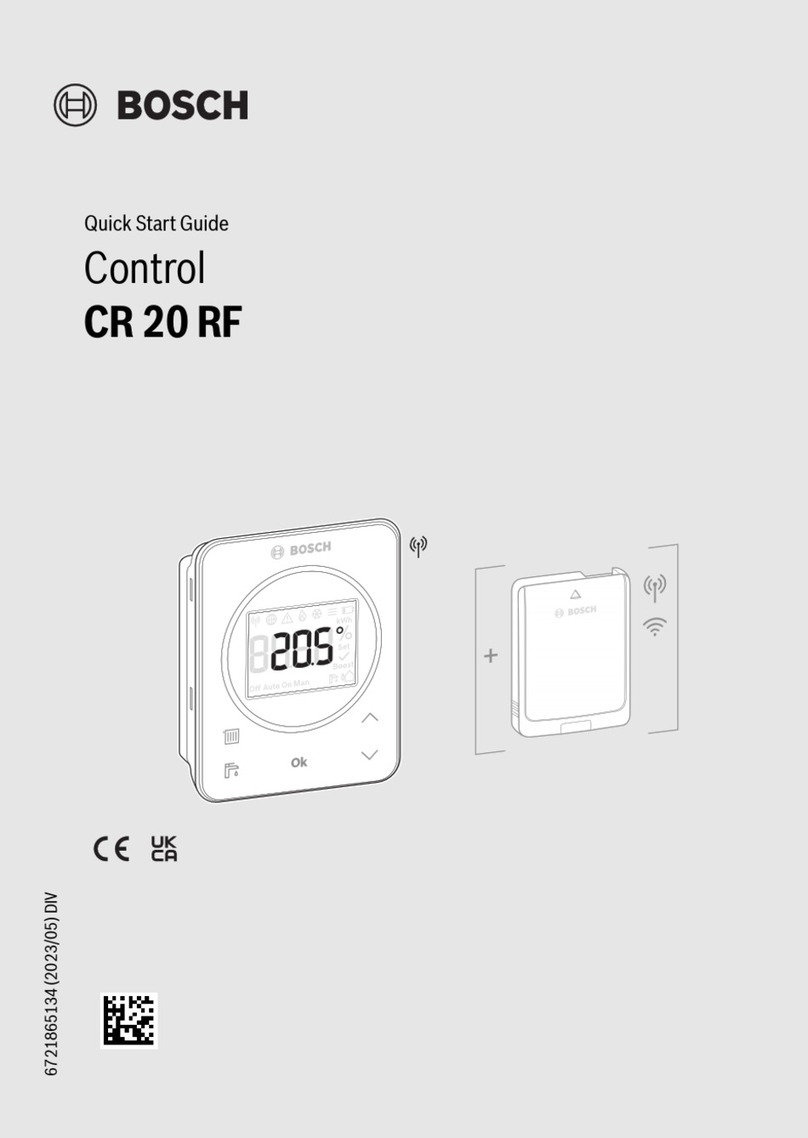
Bosch
Bosch CR 20 RF quick start guide
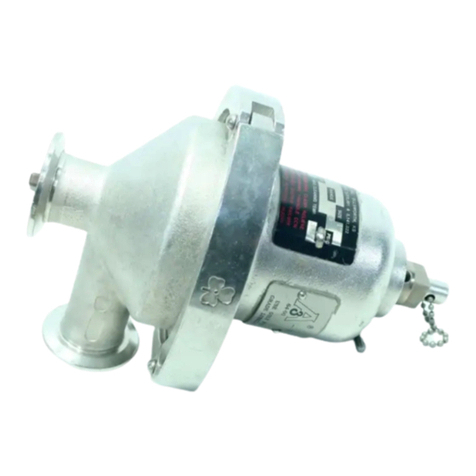
cashco
cashco C-PRV Installation, operation & maintenance manual
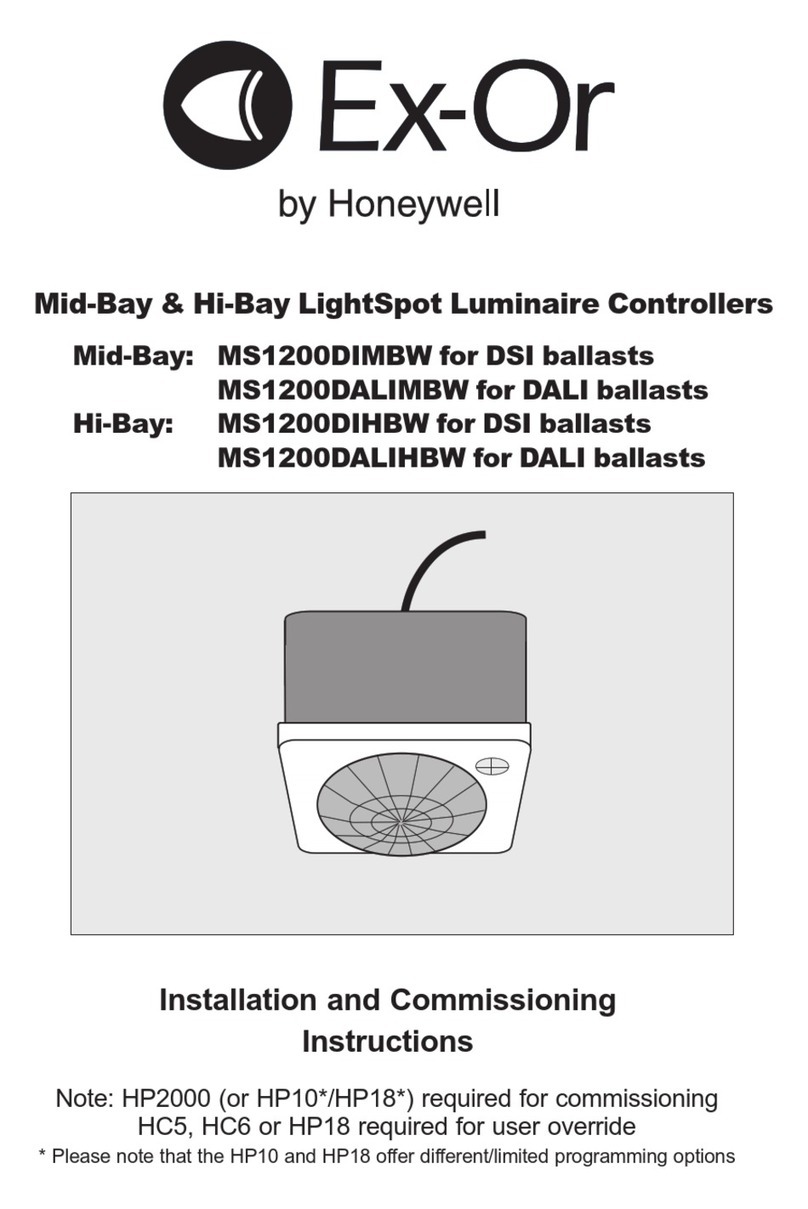
Honeywell
Honeywell Ex-Or Mid-Bay MS1200DIMBW Installation and commissioning instructions

Sonos
Sonos 200 Convertible Technical specifications
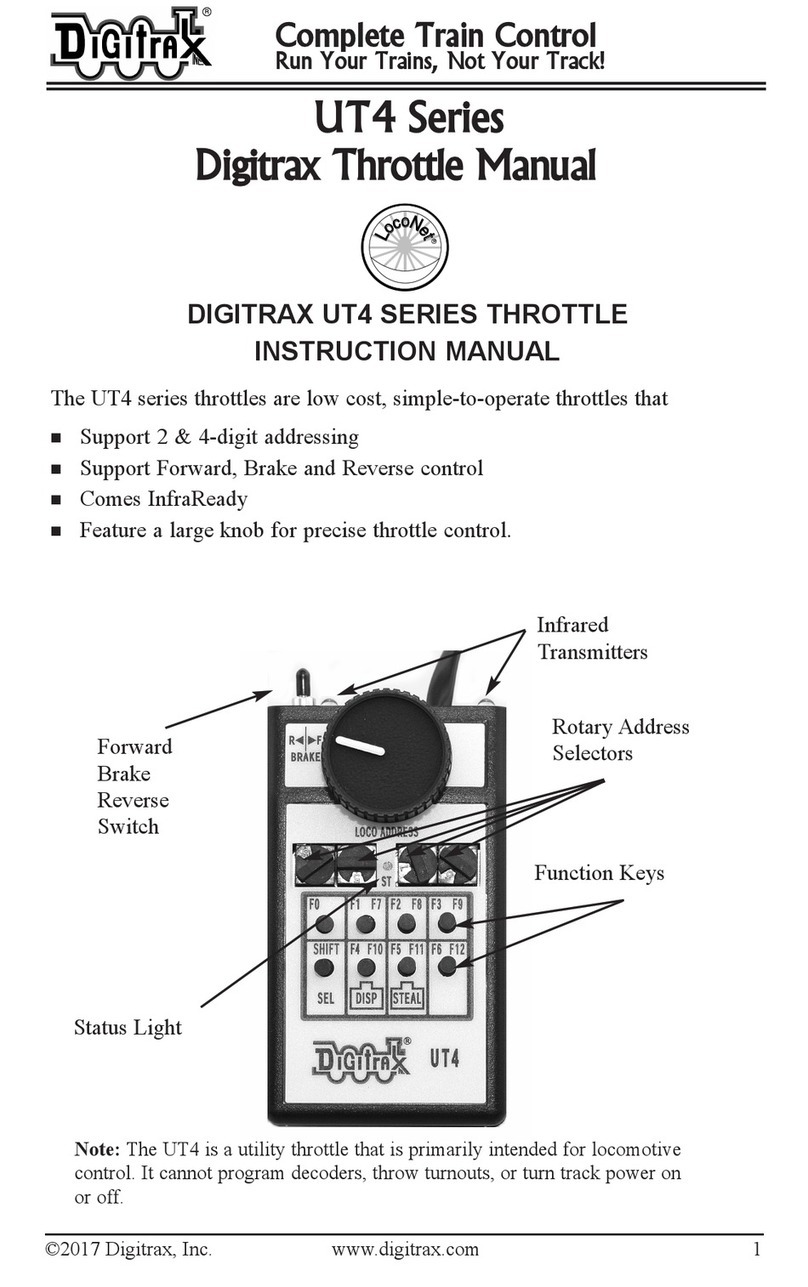
Digitrax
Digitrax UT4 Series instruction manual
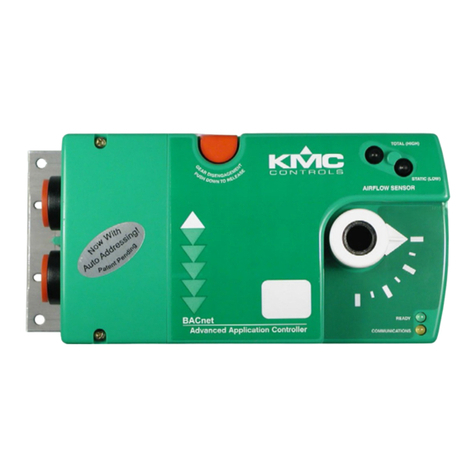
KMC Controls
KMC Controls BAC-7001 installation guide
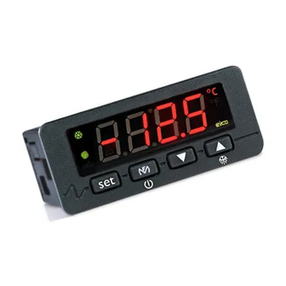
Evco
Evco EVK204 manual
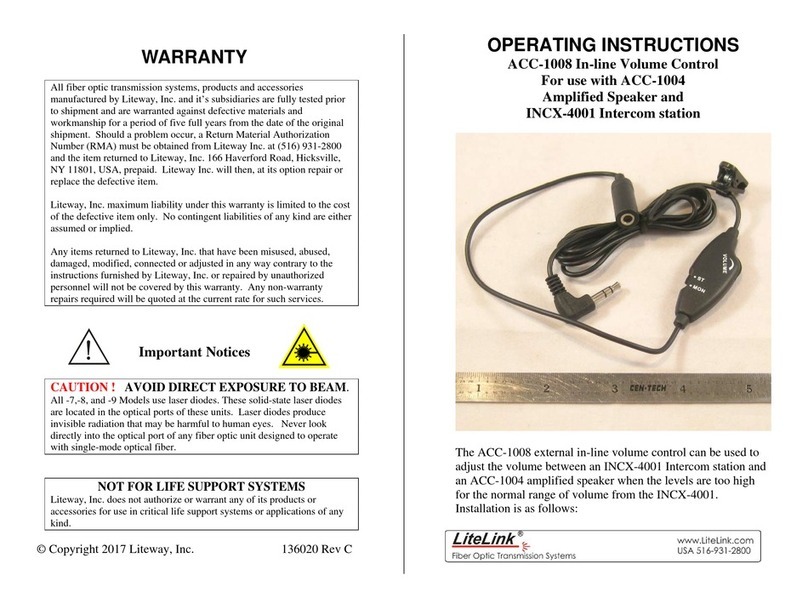
Litelink
Litelink ACC-1008 operating instructions
